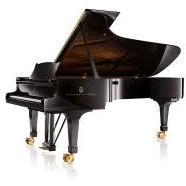Leaderboard
Popular Content
Showing content with the highest reputation on 12/13/2022 in all areas
-
Only just saw this reply! Thanks v much for listening Peter. I might well try to re-orchestrate an acoustic version at some point. It was really just an improvised piece, inspired by the tonal qualities of the glass pad synth; but I think it would definitely work on a church organ. I'm a big fan of electronic music, as you've probably guessed: so I was trying to experiment with synth sound palettes.1 point
-
First, the viola should never get below the C. It's unplayable below it, but you make it crawls deep to a G! Will you try to finish the harmonic cycle of tonic-predominant-dominiant-tonic first to see what will happen next?Sometimes you have to work on your present material fully to have a new idea or inspiration! For example giving a binary structure for this opening? I think motivically, the theme in viola (even though it's out of range) and the rising 6th figure in the violins can be used. I don't think the present stage these materials can be called a first theme. Maybe you can try to develop it first base on those two materials and then try to find other materials to provide contrast! I think the section presented now can act as a good introduction, but not as a first theme itself, though it can provide seeds for later development! Keep trying and composing and I am sure you can find your own way to solve the problem!!1 point
-
Me too, until I read this peer-reviewed article on its structure. Whereas choruses found in his cantatas generally deviate from the scheme I described earlier somewhat, the Kyrie actually more or less follows it exactly, with an extra 4-bar introduction (point 5 is a re-exposition, 6 is a complete statement in the tonic key). The ritornello is well-hidden because of the seamless transitions between the fugal complexes and the ritornello theme, achieved by continuity of parts, and importantly - displacing structural cadences so they do not align with the actual structure! What's perhaps even more surprising is that the actual ritornello theme - a 6-part magnificent piece of counterpoint - can be reduced down to 3 essential parts. So just a short trio sonata, if you like. None of this is an effort for me to downplay and to dumb down Bach. I actually find these results - that the vast majority of his works that are incomprehensibly complex on the surface, can be systematically reduced down to simple musical ideas - to be comforting as an amateur composer 🙂1 point
-
Nice work, man! I am always envious of pianists, since I lack the coordination to play Mary Had A Little Lamb with accompaniment in the left hand. I'd say my only complaint, would be that around the section from bar 13 I believe it is on the score, I felt the accompaniment could've been "unfolded" more as the dynamics increased. Strictly block chords feels like it would be much more suited/idiomatic to strings than a piano in the section, and would be a nice way around the fumbling or dropped notes that even the best pianists are likely to miss in such a passage, IMO.1 point
-
Hi @Henry Ng! I'm very glad you enjoyed the piece! These are some high praises 🙂. I'll talk through my vision for the work - hopefully it will better explain a few of the features here. Firstly, the overall texture I had in mind is that of an organ's. The initial French overture texture is in particular heavily inspired by BWV 552 ("St Anne" Prelude): heavy-handed voicing, ornamental, seventh chords, 2 & 4 suspensions everywhere. The following fugue remains in the organ texture - it achieves this by making the organ "pedal line" distinct. It offers an alternative view of the duet vs tutti sections as manualiter vs a pleno organo. It explains why the duets occur exclusively in the upper two voices. I'd also love to claim that the fusion of ritornello and fugal form is innovative...But sadly the master himself has already done it in various major works. Some of the fugues from the Brandenburg Concertos and the Orchestral Suites have hints of ritornello form, but the most explicit examples can be found in his vocal music repertoire. See for example, the opening choruses of BWV 45 or 67 (for an even more complex example, see the opening Kyrie of the Mass in B minor). The overall scheme for these is: 1. Open with a complete ritornello theme (one that is very much like mine) on instruments. The ritornello theme itself must contains a "subject" which is passed a few times across the instruments. 2. The voices now enter procedurally in a fugal exposition using this subject. 3. Restatement of the complete ritornello theme in the dominant key, with the voices doubling instruments. 4. Instrumental interlude. 5. Free continuation. It could be a re-exposition, or wholly new material. Followed by, 6. One or two restatement of the complete ritornello theme. The last statement is in the tonic key and concludes the piece. I think the most important thing to note from this scheme is that ritornello form forms the basis, not fugue. The presence of fugal material here serves no purpose other than to bridge the ritornello themes. This is exactly the principle I've taken in my overture, though my own scheme differs from these choruses: the opening ritornello theme is skipped entirely, and my approach to restatements of the ritornello theme is that of concerto rather than chorus - the ritornello theme is chopped up instead of being completely restated. Consequently, my focus is on the ritornello theme, and not on contrapuntal techniques such as stretto, augmentation, or inversion. Though stretti can be found, its purpose is to facilitate (either starting or concluding) imitative dialogue in the duet sections using material present already in the ritornello theme. This is why three-part stretto is not present (and why it wasn't even on my shopping list when I began architecting the work)! The relevant example from literature would be BWV 1066 (Orchestral Suite No. 1). The subject can indeed be placed in stretto, but what Bach chose to do is quite puzzling. He uses stretto extremely sparingly, in seemingly unimportant places, and sometimes played by instruments which are not very audible (the second violins & violas). But if we choose to take the view that Bach's focus is on ritornello theme and not on fugue (and fugal techniques), then it actually makes sense. These stretti are placed right after the conclusion of the trios, and they serve as a way to procedurally, but quickly bring back the strings. Very clever!1 point
-
1 point
-
Thank you for the kind, thoughtful and detailed feedback! I appreciate and agree with your well thought out criticism and I will work further by keeping your comments in mind. Thanks again for taking the time to listen and to comment! 🙂1 point
-
Hello! I must say your melodic writing is beautiful. Your modulation to F major was my favorite part; the harmonies are very warm and affecting. I agree with @aMusicComposer that it would be helpful to include the higher register of the piano. If you do not want to modify the entire part, I would suggest changing it at the B section. You could also possibly take it up another octave again at the second A section to give a feeling of progress. Of course, these are only suggestions, and the emotions the piece conveys are no one's but yours to decide. 🙂 One other idea I had is that the cello could rest in bars 56 through 58 — that may help break up the “sameness” that @aMusicComposer mentioned, and I often hear short piano interludes between sections of pieces in this vein. Adding an instrument again after a rest has the potential to make the arrival at a new section (especially one heard earlier) more impactful. Again, this is a very good piece and I hope you keep up your beautiful compositional work!1 point
-
First, really want to have a score posted here! I only see the violin score in your youtube video, but hope to see other instruments too! This will allow other reviewers to look at the score clearly to provide a more detailed commentary! For the introduction, In 0:29, the winds seems overwhelmed by the strings accompaniment. I feel like the introduction is quite detached from the remaining waltzes. In waltz no.1, The repetition in 1:35 with doublings do provide timbral contrast! The waltz no.2 provides good contrast with the the first one. The horns in waltz no.3 are really warm, particularly in a warm key of E flat major! I find the B double flat in bar 21 of the waltz quite weird, as I only expect to see a double flat in key with more than 5 flats! I love the change of colour in waltz 4! The G strings in violin, with winds fulfilling the gap, then repeated by high register tremolo! The coda is amazing too with elements from previous waltzes coming back, e.g. the graceful melody fr. waltz no.3, tremolos fr. no.4 e.t.c. Each waltz itself is quite contrasting in its repetition and its binary structure, but put together is even more varied. That's for sure a pleasant listening! Great Job! Henry1 point
-
1 point
-
I haven't written for it yet, but since I don't have many performed works I think I might in the future! And @Thatguy v2.0 is submitting a piece to it this year:1 point
-
I am so flattered that you would want to share my piece! No, I do not mind at all. Thank you so much! After bar 117 I would imagine there is not enough tension and that the ending is somewhat anticlimactic, so if you or anyone else would like to share what is happening mentally/emotionally for you during that final section, I would love to hear. Re: the dotted quarter rest: I thought it might provide a good moment to breathe metaphorically, for the listener, after the prior chaos (which was intentional, yes -- I wanted an improvisatory sound to come through and the idea of disintegration.) Re: the single key signature: I had my notation software set to concert pitch to ease my workflow and forgot to change it when I was exporting the score. Thank you for catching it!1 point
-
Not much to add to the previous great comments. As @PeterthePapercomPoser said, doubling instruments should not appeared or even play together! You should indicate in the score whenever there is instrumental change, or just treat it as a septet. And as @Omicronrg9 said, only in atonal music does the transposed instruments do not need to be written in a transposed key. But I feel like your piece is quite tonal, so I suggest you to write transposed key for the clarinets, horn and english horn. Regarding the music itself is really nice and chilling! I don't think that will be really difficult to be performed for the wind players.1 point
-
This is a piece for wind quintet that I've been at for the past few months. I really wanted to take a deep dive into quartal harmony, and it's been fun figuring out how to use this style for my own compositions. I'd love any kind of feedback, and hopefully you enjoy!1 point
-
Sam - Very beautiful, some masterful melodic writing here. The sense of an unbroken line is wonderful and well crafted. That said, there's three things I want to raise - not necessarily criticisms, just points that you might want to consider. First, I wonder if it's a bit 'samey' all the way through. As I said, the continued line is beautiful, but I wondered if you might want to shake it up a little bit? To me, the modulation is the perfect point to introduce a different texture. If you would want to keep the melody as it is, which I imagine you do, this change could be something as simple as putting the piano part up like 2 octaves for this section - letting the cello hold the bottom of the music with the piano glittering on top. That leads me onto the second thing: be careful with the registers you're using. Most of the time, the piano is sitting in its middle bottom register, coinciding with the cello and that tends to reduce the clarity of both parts. I think in a live setting (because you really should get someone to play this!) the extra resonance from a real piano would completely overshadow the cello. Just something to watch. Lastly, a very minor thing, I think the trills/mordents /gracenotes could just be just be written out in full, standard notation. To me, they hold melodic value and aren't just 'throwaway' notes. Of course, you might think differently - and of course, it's your piece! I'd be interested to hear your thoughts on that. Well done on a beautiful composition!1 point
-
The section which you refer to as glissandos to me just sound like quick descending scalar runs. The term glissando is usually meant to refer to the kind of pitch bends which you employ later on (1:13 - 1:39). I again have to question your choice of synthesized instrumentation - to me it sounds cheesy and I yearn to hear this musical material reorchestrated for acoustic instruments maybe featuring a string orchestra (at least). Of course people tell me that often my pieces sound cheesy so I guess - to each his own. Although I do get your intent of depicting a haunted house but I think a pipe organ with flute stops might have been a more effective instrumentation in that case. Thanks for sharing.1 point



.thumb.png.8b5b433a341551e913a34392660bc95b.png)


